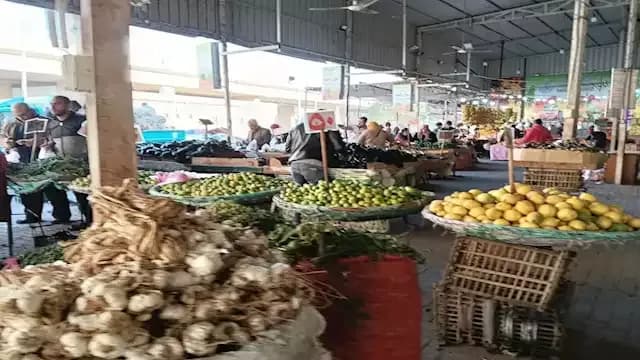Harvesting Resilience: How Climate and Crackdowns Shape the Future of Antep Pistachios
Explore how climate change impacts pistachio harvests & intense market regulations are reshaping Turkey's prized Antep pistachio industry. A deep dive into its complex future.
The Unfolding Harvest: A Battle Against Nature's Caprice
The iconic Antep pistachio, often dubbed 'green gold,' faces an increasingly challenging harvest season, particularly in key agricultural regions like . As the harvest commenced at vast Ceylanpınar Agricultural Enterprise Directorate, a somber reality emerged: yields are significantly lower than previous years. This downturn is primarily attributed to a severe lack of rainfall, a stark reminder of nature's caprice in an era of unpredictable climate patterns. Hundreds of dedicated workers converge on the sprawling 31,939-decare land, home to over 300,000 pistachio trees, from the cool pre-dawn hours, toiling for approximately eight hours daily to gather the precious nuts. Despite the immense human effort and the large scale of operations, which are expected to continue for 40 days and eventually involve up to 800 laborers, the reduced precipitation has undeniably dampened expectations. This environmental pressure not only threatens the livelihoods of countless farmers but also sets the stage for potential market volatility.

The Golden Nut's Market Maze: Under the Government's Gaze
As the agricultural sector grapples with environmental setbacks, the market for Antep pistachios is simultaneously navigating a complex web of regulatory scrutiny. , through a coordinated effort involving the , the , and the , have launched extensive inspections across major pistachio hubs. This multi-pronged initiative targets areas like , , , and , aiming to safeguard market stability, curb unfair price increases, and combat unregistered trade. Teams comprising tax auditors and food and agriculture control officials descended upon 87 firms in Gaziantep's GATEM and Nizip Pistachio Sites, meticulously examining inventory levels, invoicing processes, and product movements. Similar comprehensive checks were conducted on 18 firms in Şanlıurfa and Birecik, with a particular focus on price formation, stock dynamics, and the meticulous review of dispatch and invoice documents. These surprise inspections underscore the government's determination to bring transparency and fairness to the pistachio trade, preventing exploitation in a market facing supply challenges.
From Orchard to Bazaar: The Interconnected Struggles
The struggles faced by the Antep pistachio industry are deeply interconnected, forming a delicate chain from the sun-drenched orchards to the bustling bazaars. Reduced yields, a direct consequence of the drought plaguing regions like Ceylanpınar, inevitably create a scarcity that can drive up prices. This natural supply shock then provides fertile ground for market irregularities, where some actors might engage in hoarding or speculative pricing, exacerbating the impact on both producers and consumers. The government's comprehensive market interventions, detailed previously, are a direct response to this potential for instability. By scrutinizing everything from old and new crop quantities to the precise documentation of goods entering and leaving the market, authorities are attempting to ensure that the challenges faced at the farm level are not compounded by artificial inflation or illicit trade practices further down the supply chain. It's a constant balancing act, trying to mitigate the effects of environmental adversity while simultaneously fostering an equitable economic environment.
Securing the Future: Balancing Sustainability and Scrutiny
Looking ahead, the future of Antep pistachios hinges on a careful balance between fostering environmental sustainability and maintaining rigorous market scrutiny. The government has made it clear that its commitment to oversight is unwavering, pledging to continue monitoring price movements, stock levels, and commercial activities to protect consumers, secure producers' livelihoods, and ensure fair market operations. This long-term vision requires farmers to adopt more resilient agricultural practices to cope with climate change, such as efficient water management and drought-resistant cultivation techniques. Simultaneously, traders and distributors must embrace transparency and adhere to regulations, knowing that continuous vigilance from ministries is the new norm. The collective goal is to cultivate an industry that can withstand environmental shocks while operating with integrity. This dual approach—nurturing the land and policing the market—is essential for the 'green gold' to continue flourishing, ensuring its journey from tree to table remains both resilient and fair for generations to come.
Related Articles

The Unstoppable Rise of the Green Kernel: Decoding the Pistachio's Global Moment

The Unstoppable Rise of the Green Kernel: Decoding the Pistachio's Global Moment

From Drought to Dinner Plate: The Unseen Battles Behind Iran's Pinto Bean Prices

From Drought to Dinner Plate: The Unseen Battles Behind Iran's Pinto Bean Prices

Green Gold, Global Roots: Unearthing the Deep Impact of Our Daily Vegetables

Green Gold, Global Roots: Unearthing the Deep Impact of Our Daily Vegetables

Japan's Rice Crossroads: The Unending Quest for Balance in the Paddy Fields
